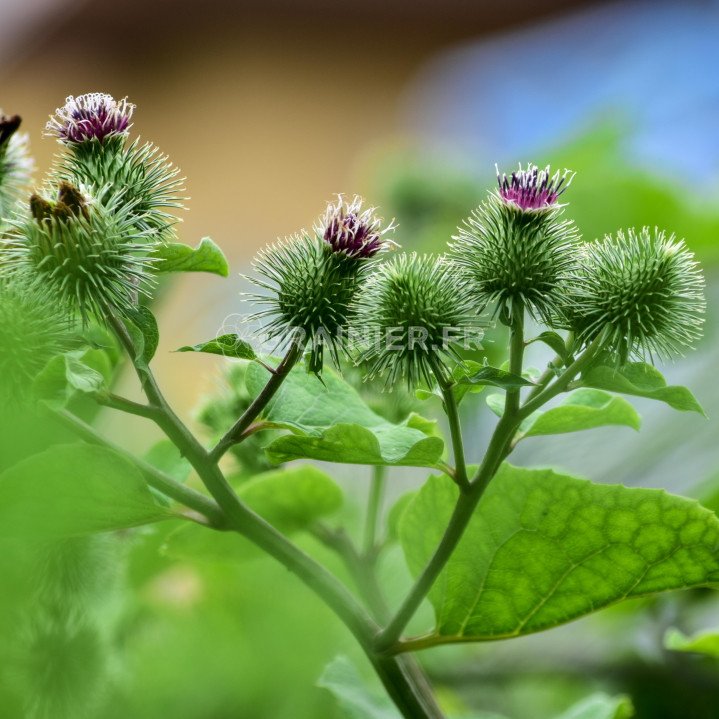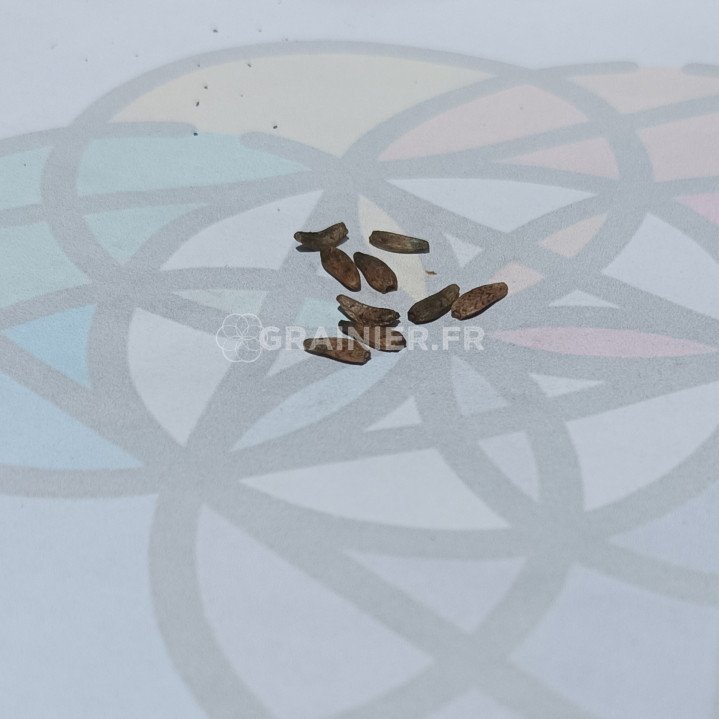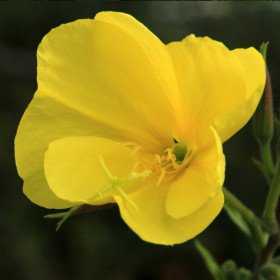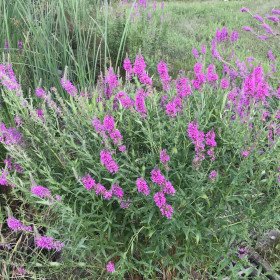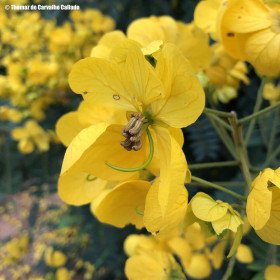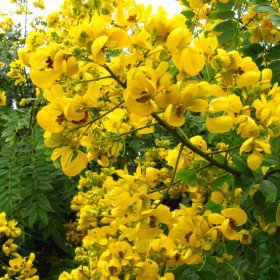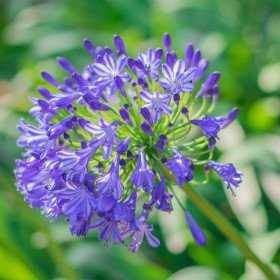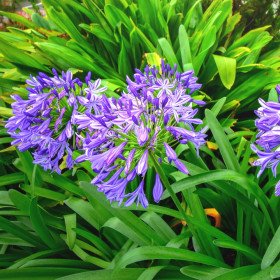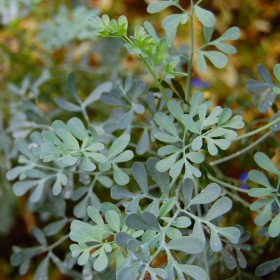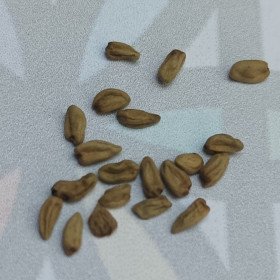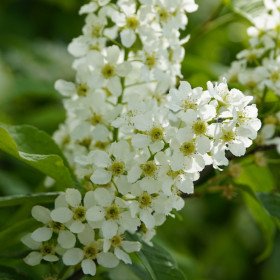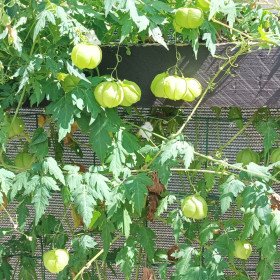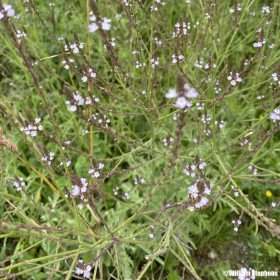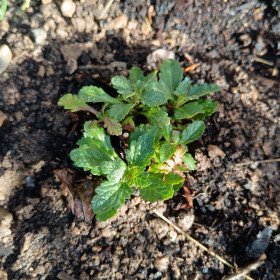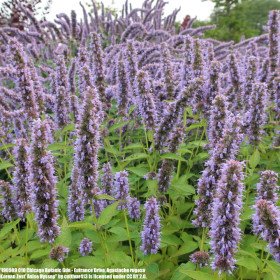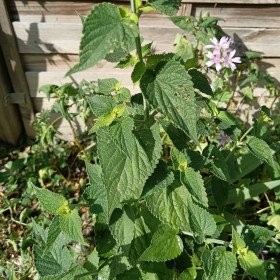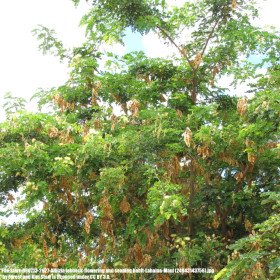20 Graines Grande bardane, Arctium lappa
20 Graines Grande bardane, Arctium lappa
- Modèle : 20 Graines Grande bardane, Arctium lappa
- Disponibilité : 10
- 1,50€
Grande bardane, Bardane officinale, Arctium lappa |
Grande bardane, Arctium lappa, jusqu'à 2 m
20 graines
La Grande Bardane (Arctium lappa L.), également appelée Bardane officinale ou Bardane commune, est une espèce de plante herbacée annuelle ou bisannuelle de la famille des Astéracées. Elle possède de nombreuses propriétés favorables à la santé1,2 et constitue une plante traditionnelle des médecines populaires. Elle est également cultivée comme plante potagère pour sa racine consommée comme légume.
Le nom scientifique du genre (Arctium) correspond au grec arktos (ours), peut-être du fait de leur apparence hirsute et « mal léchée ». L'épithète lappa dérive du grec lambanô, « accrocher », par allusion aux capitules munis de crochets favorisant la zoochorie3. Quant au nom vernaculaire (bardane), il est issu du latin médiéval bardana, altération du latin tardif dardana mentionné par Pseudo-Apulée dans De Herbis4 qui lui-même correspondrait au germanique *daroþ « dard » (cf. v. angl. daroþ, v. norr. darraðr, anc. h. all. tart), rappelant les crochets qui permettant la dissémination des graines de la plante et ont inspiré l'invention du Velcro5.
Elle porte de nombreux noms vernaculaires : Bardane comestible, Grande bardane, Glouteron, Bardane géante, Herbe aux teigneux. Elle est parfois appelée secondairement ou régionalement Chou d'âne, Copeau, graquias, crakia, Grippe, Herbe au teigneux, Herbe aux pouilleux, Herbe aux seigneurs, Napolier ou Oreille-de-géant.
Gobo (nom japonais de la bardane cultivée). En allemand : Große Klette, en anglais : edible burdock, en espagnol : bardana.
La racine de bardane se consomme crue ou cuite. Ayant un agréable goût d'artichaut et une saveur sucrée due à l'inuline, elle s'accommode à la manière des salsifis, sautée ou en gratin15. On s'en est servi, coupée en morceaux et torréfiée comme succédané de café16. Au Japon est aussi vendue marinée et enveloppé de feuilles de périlla17.
Les jeunes feuilles sont également consommables mais elles doivent être blanchies pour éliminer leur amertume. Les jeunes pousses peuvent se manger comme des asperges ou être cuisinées à la vapeur18.
- Partie utilisée : racine et feuille.
- Composant : inuline, lappoline, huile essentielle, principe amer, sucre, antibiotique, sels de calcium et magnésium.
Propriétés : diurétique, détoxifiant20 (élimination par les reins, la peau & les muqueuses), hépatoprotecteur, diaphorétique (induction de la sudation), soulagement des douleurs rhumatismales, soins des dermatoses (racine). Vulnéraire, soins des dermatoses (feuille).
La Grande bardane est utilisée traditionnellement en tant que diurétique21 ou dépuratif sanguin, laxatif22, dans le traitement des lithiases biliaires ou urinaires23, et pour certaines affections musculo-squelettiques21.
Les composants de la Grande bardane peuvent se lier à des composés toxiques tels que les polycholorobenzènes (PCB), et ainsi faciliter leur élimination. L'action hépatoprotectrice de divers éléments de la Grande bardane a ainsi pu être testée expérimentalement24. Les acides caféoylquiniques présents en quantité importante dans la Grande bardane ont quant à eux une activité reconnue contre plusieurs agents hépatotoxiques25. Finalement, la Grande bardane réduit l'absorption intestinale de cholesterol et de lipides, ainsi que la formation d'acides lithocolique et désoxycholique26. Ces observations expérimentales corroborent ainsi l'utilisation traditionnelle de la grande bardane comme hépatoprotecteur, dépuratif et détoxicant.
La Grande bardane est aussi utilisée dans le traitement de maladies de la peau, en particulier l'acné. Cette action est en partie liée à son activité dépurative et détoxifiante, à la stimulation de l'activité hépatobiliaire et de la diurèse. De plus, la grande bardane possède une activité anti-inflammatoire et anti-oxydante27, et l'on sait que la formation excessive de radicaux libres dans la peau joue un rôle dans la pathogenèse de l'acné et d'autres dermatites. Finalement, les acides caféoylquiniques protègent le collagène cutané des altérations induites par le rayonnement solaire ou les U.V. artificiels, et inhibent l’hyaluronidase28.
Contenu soumis à la licence CC-BY-SA 3.0. Source : Article Grande bardane de Wikipédia en français (auteurs)
Etiquettes : bardane, grande, officinale, arctium, lappa, GRAINES DE FLEURS & ARBRES Grande bardane, Bardane officinale, Arctium lappa, Potagères Grande bardane, Bardane officinale, Arctium lappa, Aromatiques & médicinales Grande bardane, Bardane officinale, Arctium lappa, Fleurs & Herbes ornementales Grande bardane, Bardane officinale, Arctium lappa, Arbustes & plantes grimpantes Grande bardane, Bardane officinale, Arctium lappa, GRAINES POTAGÈRES & AROMATIQUES Grande bardane, Bardane officinale, Arctium lappa, Grande bardane, Bardane officinale, Arctium lappa GRAINES DE FLEURS & ARBRES, Grande bardane, Bardane officinale, Arctium lappa Potagères, Grande bardane, Bardane officinale, Arctium lappa Aromatiques & médicinales, Grande bardane, Bardane officinale, Arctium lappa Fleurs & Herbes ornementales, Grande bardane, Bardane officinale, Arctium lappa Arbustes & plantes grimpantes, Grande bardane, Bardane officinale, Arctium lappa GRAINES POTAGÈRES & AROMATIQUES


